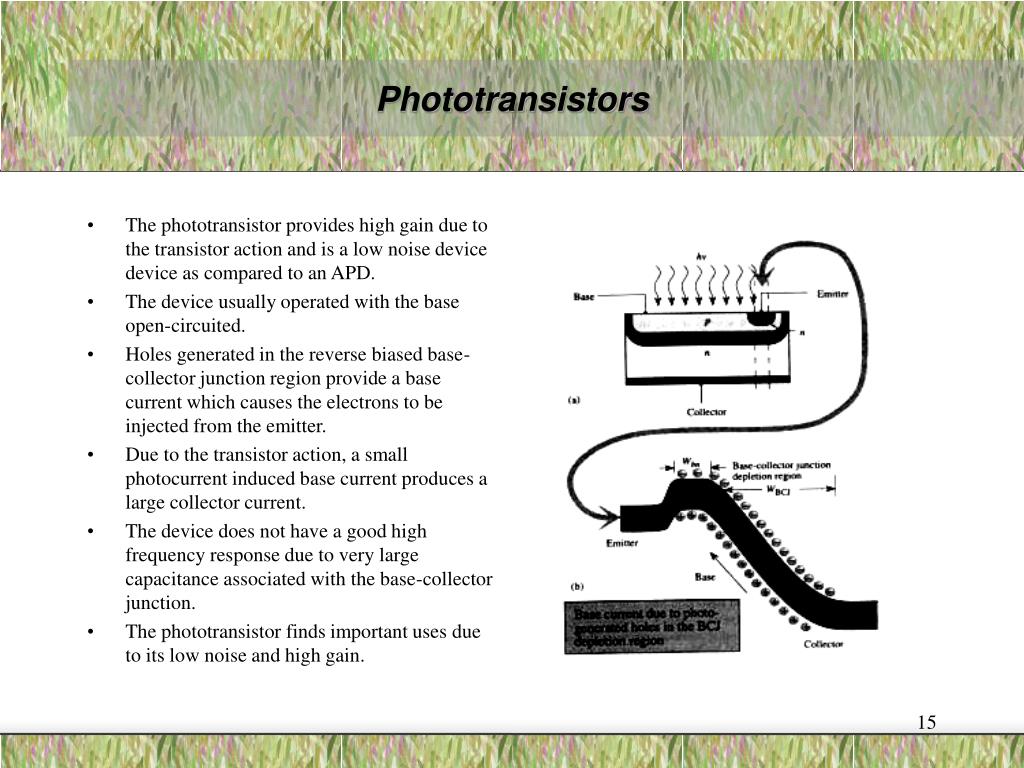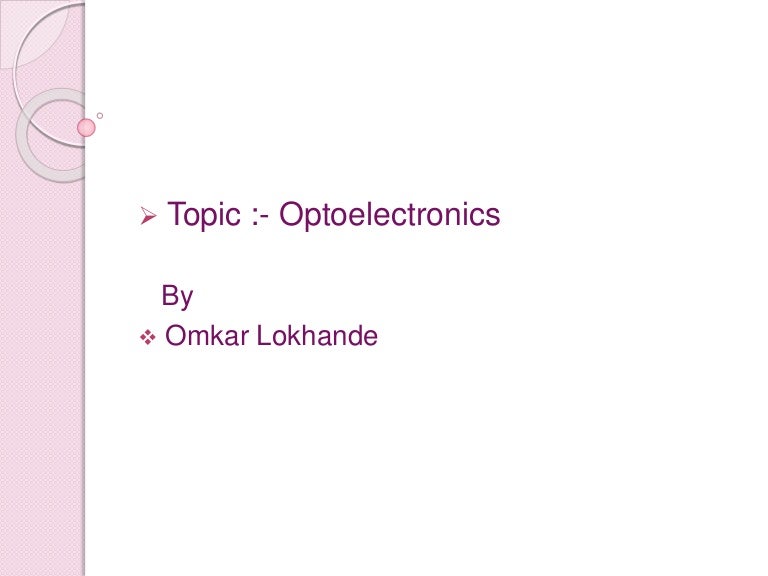
In the deficiency of light, BJT phototransistor allows leakage among collectors as well as an emitter of 100 nA otherwise low. A phototransistor is 50 to 100 times more sensitive than a photodiode with a lower level of noise.

The base current from the incident photons is amplified by the gain of the transistor, resulting in current gains that range from hundreds to several thousand. Its working condition depends upon the intensity of light. The collector-base junction is very sensitive to light. With the base connection open circuit, the collector-base current must flow in the base-emitter circuit, and hence the current flowing is amplified by normal transistor action. With light falling on the collector-base junction the current flow increases. With no light falling on the device there will be a small current flow due to thermally generated hole-electron pairs and the output voltage from the circuit will be slightly less than the supply value due to the voltage drop across the load resistor R. The emitter is the negative lead and the outlet for the larger electrical supply. The collector is the positive lead and the larger electrical supply. It is the gate controller device for the larger electrical supply. The base is the lead responsible for activating the transistor. Compared to the conventional transistor it has more base and collector areas.Īncient phototransistors used single semiconductor materials like silicon and germanium but now a day’s modern components use materials like gallium and arsenide for high-efficiency levels. It can also work while the base is made open. It is available in both the P-N-P and N-P-N types having different configurations like common emitter, common collector, and common base but generally, common emitter configuration is used. ConstructionĪ phototransistor is nothing but an ordinary bi-polar transistor in which the base region is exposed to illumination.

Compared to a normal transistor, a phototransistor has a larger base and collector width and is made using diffusion or ion implantation.

The structure of the phototransistor is specifically optimized for photo applications. have the same basic radiation frequency response. In fact, all diodes, transistors, Darlington’s, TRIACs, etc. All silicon photosensors (phototransistors) respond to the entire visible radiation range as well as to infrared. These are activated by light particles and are used in virtually all electronic devices that depend on light in some way. This is because a phototransistor is made of a bipolar semiconductor and focuses on the energy that is passed through it. Instead of sending current into the base, the photons from striking light activate the transistor. Phototransistors are transistors with the base terminal exposed.


 0 kommentar(er)
0 kommentar(er)
